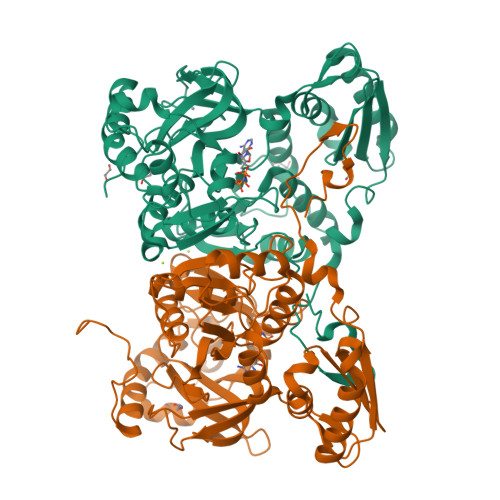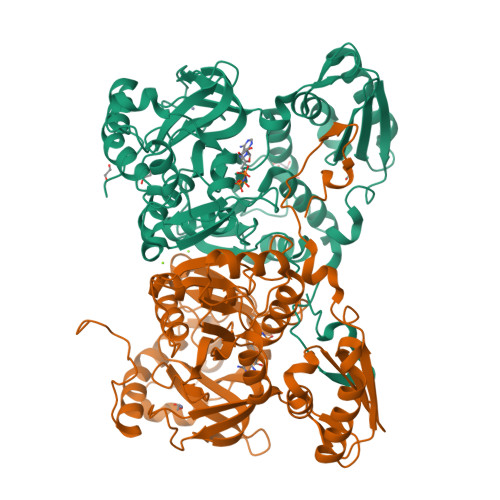The Biosynthesis of the Benzoxazole in Nataxazole Proceeds via an Unstable Ester and has Synthetic Utility.
Song, H., Rao, C., Deng, Z., Yu, Y., Naismith, J.H.(2020) Angew Chem Int Ed Engl 59: 6054-6061
- PubMed: 31903677
- DOI: https://doi.org/10.1002/anie.201915685
- Primary Citation of Related Structures:
6SIW, 6SIX, 6SIY, 6SIZ, 6SJ0, 6SJ1, 6SJ2, 6SJ3, 6SJ4, 6TM4 - PubMed Abstract:
Heterocycles, a class of molecules that includes oxazoles, constitute one of the most common building blocks in current pharmaceuticals and are common in medicinally important natural products. The antitumor natural product nataxazole is a model for a large class of benzoxazole-containing molecules that are made by a pathway that is not characterized. We report structural, biochemical, and chemical evidence that benzoxazole biosynthesis proceeds through an ester generated by an ATP-dependent adenylating enzyme. The ester rearranges via a tetrahedral hemiorthoamide to yield an amide, which is a shunt product and not, as previously thought, an intermediate in the pathway. A second zinc-dependent enzyme catalyzes the formation of hemiorthoamide from the ester but, by shuttling protons, the enzyme eliminates water, a reverse hydrolysis reaction, to yield the benzoxazole and avoids the amide. These insights have allowed us to harness the pathway to synthesize a series of novel halogenated benzoxazoles.
Organizational Affiliation:
Key Laboratory of Combinatorial Biosynthesis and Drug Discovery (Ministry of Education), School of Pharmaceutical Sciences, Wuhan University, 185 East Lake Road, Wuhan, 430071, P. R. China.





















